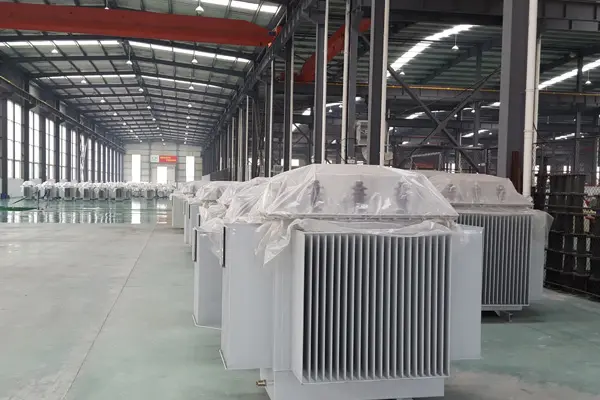A Buck-Boost Transformer is a type of transformer designed to adjust voltage in small increments. It can either “buck” (decrease) or “boost” (increase) voltage, typically used for correcting minor voltage imbalances. These transformers are ideal for situations where the voltage is slightly too high or too low for your equipment to function optimally, providing a cost-effective solution for voltage regulation.

Key Features and Advantages of Buck-Boost Transformers
Small Voltage Adjustments
A Buck-Boost Transformer is designed to adjust voltage by small amounts—usually in increments of 5%, 10%, or 15%. It’s not suitable for large-scale voltage conversion, but rather for correcting minor voltage fluctuations in a system.
Energy-Efficient
Compared to larger transformers, Buck-Boost Transformers are highly efficient because they only adjust the voltage slightly, leading to minimal energy loss. They are a cost-effective solution for voltage regulation, especially when dealing with small voltage variations.
Equipment Protection
Voltage fluctuations, whether too high or too low, can cause damage to sensitive equipment. A Buck-Boost Transformer helps to stabilize voltage, protecting equipment from potential harm and ensuring that devices run efficiently and last longer.
Applications of Buck-Boost Transformers
1. HVAC Systems
Buck-Boost Transformers are commonly used in HVAC systems to regulate voltage, ensuring air conditioning and heating systems operate smoothly and efficiently without the risk of electrical damage due to voltage fluctuations.
2. Lighting Circuits
Lighting systems often suffer from voltage instability, which can cause flickering or uneven lighting. Buck-Boost Transformers help to stabilize the voltage in lighting circuits, ensuring consistent illumination and preventing damage to lighting equipment.
3. Industrial Machinery
In industrial machinery, a stable voltage supply is critical for optimal performance. Buck-Boost Transformers help protect machinery from voltage fluctuations, reducing downtime and maintenance costs by ensuring the equipment runs within the required voltage range.
4. Home Appliances
In residential applications, Buck-Boost Transformers can protect sensitive household appliances—such as televisions, computers, and refrigerators—by stabilizing the voltage and preventing damage caused by power surges or drops.

How to Choose the Right Buck-Boost Transformer
When selecting a Buck-Boost Transformer, consider the following factors:
- Voltage Range: Determine the voltage fluctuation in your system and select a transformer that can handle the necessary adjustments. Buck-Boost Transformers usually adjust voltage by 5%, 10%, or 15%.
- Power Requirements: Choose a transformer that can handle the load size and power demands of your system.
- Application Type: Depending on whether the transformer is for HVAC systems, lighting, motors, or other applications, make sure to choose one specifically designed for those needs.
Installation and Maintenance of Buck-Boost Transformers
Installation
While installing a Buck-Boost Transformer is relatively straightforward, it’s recommended to have a professional electrician handle the installation to ensure proper wiring and safety. Ensure the input and output voltages match the requirements of the system.
Maintenance
Regularly check the transformer for any signs of wear or malfunction. Inspect connections to ensure they are secure and check the transformer’s exterior for damage. If you notice unusual sounds or overheating, consult a professional to perform maintenance or replacement.
Frequently Asked Questions (FAQ)
1. Can a Buck-Boost Transformer be used for large-scale voltage adjustments?
No, Buck-Boost Transformers are designed for small voltage adjustments (usually up to 15%). If large-scale voltage conversion is needed, a standard transformer is more appropriate.
2. How do I calculate the capacity of the Buck-Boost Transformer I need?
To calculate the required capacity, you need to know the input and output voltages, as well as the load current. Based on these parameters, you can select a transformer that matches your voltage regulation and load requirements.
3. What is the difference between a Buck-Boost Transformer and a regular transformer?
A regular transformer is used for large-scale voltage conversion, while a Buck-Boost Transformer is specifically designed for small voltage adjustments. Buck-Boost Transformers are more compact and cost-effective for applications that don’t require significant voltage changes.
4. Is installing a Buck-Boost Transformer easy?
Installation is relatively simple, but it’s recommended to hire a licensed electrician for proper setup and safety. Ensuring the wiring is correct and the transformer is properly connected is crucial for efficient operation.
5. Will using a Buck-Boost Transformer increase energy consumption?
No, Buck-Boost Transformers are designed to be energy-efficient and use very little power while adjusting the voltage, so they won’t significantly increase energy consumption.
Pricing and Buying Advice for Buck-Boost Transformers
Buck-Boost Transformers are generally more affordable than traditional transformers due to their smaller size and simpler function. Prices can vary depending on the model, power rating, and brand. For a cost-effective solution to minor voltage adjustments, Buck-Boost Transformers offer great value. When purchasing, consider reputable brands and ensure they provide a warranty and good customer support.
Conclusion
A Buck-Boost Transformer is an effective tool for voltage regulation, especially in applications where small adjustments are needed. By selecting the right model and ensuring proper installation, you can protect your equipment from voltage fluctuations and extend its lifespan. Whether for HVAC systems, lighting, or industrial machinery, a Buck-Boost Transformer is an excellent choice for improving the efficiency and reliability of your electrical system.
Related blogs
- What is the Cost of a 3KVA Voltage Stabilizer?(2024 Price Guide)
- What Is the Voltage of Industrial 3‑Phase Power?
- What Is the Difference Between Relay, Servo, and Static Voltage Stabilizers?
- How to Choose the Right 3-Phase Voltage Stabilizer for Your Needs
- How to distinguish low voltage, medium voltage and high voltage switchgear

